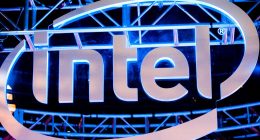To boost its computer vision capabilities and further augment RealSense platform’s development strategy, premier chipmaker Intel Technologies has acquired computer vision startup Movidius for an undisclosed amount. This acquisition will enable both companies to build low-power, high-performance solutions for machines that’ll enable them to visually process and understand their surroundings.
Intel has recently been adapting to the paradigm shift towards machine learning and artificial intelligence by acquiring solution providers and manufacturers to build out its own groundbreaking technologies. Prior to Movidius, the chipmaker has acquired machine learning startup Nervana Systems for $400 million. It has recently also unveiled its 7th generation ‘Kaby Lake‘ processors, built specifically to provide an immersive graphics experience.
Being the largest silicon chip manufacturer, the company is looking to directly integrate deep learning capabilities into their hardware instead of a software. Thus, this acquisition lays focus on the same and brings algorithms tuned for depth processing, navigation, mapping, and natural interactions to the plate. This will help Intel explore and build core and powerful technologies for drones, robots, virtual reality headsets, security cameras, and beyond.
Commenting on the acquisition, Josh Walden, senior VP and GM of Intel’s New Technology Group, says,
We see massive potential for Movidius to accelerate our initiatives in new and emerging technologies. The ability to track, navigate, map and recognize both scenes and objects using Movidius’ low-power and high-performance SoCs opens opportunities in areas where heat, battery life and form factors are key.
He further adds that Movidius’ computer vision powered SOCs complement Intel’s own RealSense offerings, and their broader IP rights and product roadmap. His dialogue is supported by Movidius CEO Remi El-Ouazzane who is very excited for the acquisition and the possibility of future synergies.
In an official blogpost, he lays emphasis on the fact that Movidius’ mission is to give the power of sight to machines, and enable to see their surroundings in 3D. The company has been attacking this challenge at the device level, by combining advanced algorithms with lower-power hardware. But after joining Intel, the team plans to complete the same tasks from the cloud, the network and the device.
Commenting on the acquisition, El-Quazzane adds,
As part of Intel, we’ll remain focused on this mission, but with the technology and resources to innovate faster and execute at scale. We will continue to operate with the same eagerness to invent and the same customer-focus attitude that we’re known for, and we will retain Movidius talent and the start-up mentality that we have demonstrated over the years.
Movidius was started in 2008 by duo Mitchell, David Moloney, who later on-boarded Remi to lead the project under his immense guidance and experience. The company’s contextually-aware architecture delivers a new wave of intelligent experiences, that has helped it sign hardware deals with some major brands, like Google, Lenovo and drone maker DJI.
If you’re unaware, Movidius’ computer vision-powered chips are one heck of the deal at the moment. It is the same chip that has led to the creation and the unveiling of the first generation of Tango devices — that enable you to map your surroundings in real-time using an array of specialized cameras and sensors. It has also achieved another feat by making DJI’s Phantom 4 drone capable of better sensing and avoiding obstacles.
Post acquisition, all 180 employees of Movidius will be joining Intel in its mission of building perceptual computing hardware and compatible software modules. With offices in Silicon Valley, Romania and Ireland, the chipmaker has managed to secure a total funding of $86.5 million in five rounds from investors including Summit Bridge Capital, Capital-E, DFJ and Emertec Gestion amongst others.
When computers can see, they can become autonomous and that’s just the beginning. We’re on the cusp of big breakthroughs in artificial intelligence.
In the years ahead, we’ll see new types of autonomous machines with more advanced capabilities as we make progress on one of the most difficult challenges of AI: getting our devices not just to see, but also to think.
concludes Movidius CEO Remi El-Quazzane.





